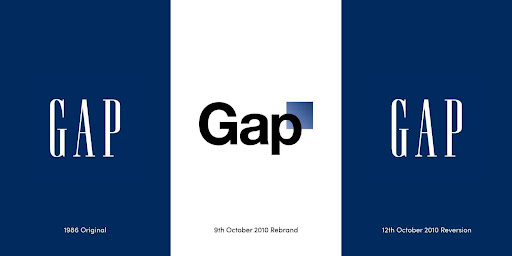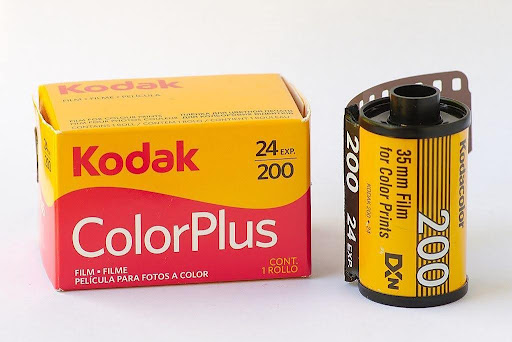When done right, branding can be an immensely powerful tool that allows every business to stand out from its competition, and communicate powerful messages and values. It helps create trust between your business and target audience and enables your buyers to form meaningful relationships with your brand.
Bad branding, on the other hand, can do the opposite. It can confuse your customers, damage your reputation, and even wreak financial havoc. In this article, we’ll talk about the damaging effects of branding gone wrong, and will also share a handful of bad branding examples to better understand the risks.
Good vs. Bad Branding: What’s The Difference?
What makes branding good in some cases and bad in others? For starters, good branding is authentic, clear, and consistent, creating trust and an emotional connection in the market. Bad branding, in contrast, is inconsistent, inauthentic, and confusing, putting your company in a bad place in the eyes of your consumers.
Branding Mistakes to Avoid
When looking at the different aspects of good branding, such as creating great value propositions, authentic messaging, great branded imagery, digital assets, and getting custom logo design services, there are countless great examples you can take a closer look at.
However, there are also several mistakes a business can make when creating its brand. It’s best to avoid these pitfalls as they can create substantial cracks in your brand’s foundation, causing you way too much headaches down the line.
1. Smoke and Mirrors Branding
Branding shouldn’t be used to hide potential issues in your services or products. Opting for the help of branding experts and designers to conceal potential flaws in your products with enticing colors and fun messaging may work for a while. Still, your customers will probably be savvy enough to notice the underlying issues, and won’t be happy to realize they’ve been misled.
2. Branding as Decoration
When getting started with the branding design process, you need to have your head in the game. Your branding isn’t an embellishment. It shouldn’t be an afterthought of a cute logo, a tagline, and pleasing colors with no strategy in place.
No, your branding isn’t a 4th of July banner, or a Labour Day visual for social media. It’s a fundamental business element that authentically and accurately represents your business’s identity to your target audience.
Investing in a sound branding strategy isn’t just about adding color and a logo to reach more people, it’s the process of adding a face to your business, and an identity that customers can connect with.
3. Cementing Your Brand
Brands should be living entities that can also change over time due to factors like public perception, market changes, technology shifts, and audience values. Refusing to change and cementing your brand is also a massive mistake in the rapidly changing business landscape.
Still, this doesn’t mean that you will have to completely rebrand your company every five to ten years. Sometimes, even adding a small refresh, like adding a revised logo or a new product can have a positive effect on your brand’s flexibility.
For example, you have Stella Artois, a Belgian brewery, which had the same logo since 1366. Yet, they released a cider-based product in 2013, to tailor its offerings for the shifting market.
4. Inconsistency
Statistics suggest that consistent branding can boost revenue by 10% to 20%. However, your brand can’t be consistent if there are no clear guidelines to present your brand.
A thorough brand strategy and a good brand book can help you create clear guidelines to follow. These rules should be religiously followed so people can recognize your brand.
5. Not Having a Unique Value Proposition
What is unique about your offering? How will your products or services benefit the customer? Do you offer something that your competition doesn’t?
A crucial aspect of branding is communicating your values and you can’t really do this if you don’t define them beforehand. Your unique value proposition should be the foundation for your logo, messaging, tagline, and other key branding elements.
6. Vague Messaging
Effective branding is impossible without concise and clear messaging. Being vague can confuse your potential customers and can cause damage to your brand. Take your time to create a tone of voice and messaging that provides information about your offerings and how they can benefit the customer.
Create meaningful messaging that will resonate with your audience and use it consistently across all of your marketing channels.
7. Being Insensitive
Your brand shouldn’t be ignorant and insensitive toward social and cultural issues as it can leave an unpleasant impression on consumers, which can have a damaging effect on your brand.
Take Audi’s highly controversial ad from 2017, which effectively compares women to used cars. While the brand’s intentions were more about being funny than anything else, the ad received a lot of backlash from viewers.
8. No Employee Onboarding and Poor Employee Treatment
Bad messaging and bad brand names aren’t the only things you need to steer clear of. Your employees are also your brand ambassadors, as they are the ones who interact with your customers, represent your values, and contribute to the overall success of your brand.
Without proper onboarding, your employees won’t be able to properly grasp your brand’s personality and values. This can also lead to inconsistent messaging and branding, not to mention, your staff may also get disillusioned with your brand.
On that note, the way your company treats its staff can also significantly impact your branding. According to data, 70% of consumers trust employees more than brand messages.
Overworked, mistreated, and poorly-treated employees won’t represent your brand in a positive light, and will probably care little about your messaging and its consistency.
Real-Life Bad Branding Examples
1. Gap and Its Brief Rebrand
The clothing brand Gap opted to redesign its well-known logo to something more modern to boost sales following the recession of 2008. The rebrand project cost around $100 million, and was carried out by a New York-based agency called Laird and Partners.
The new design went live in October of 2010, replacing the iconic old design. The new logo and design looked more like an accountant’s website and received massive backlash from customers. Only six days later, the brand reverted to its old design.

2. The 2012 London Olympics Logo
The logo of the 2012 London Olympics underwent pretty massive criticism for several reasons. For starters, people said that has no connection neither to the games nor to London. Others found it just simply ugly.
Another concern was that the abstract shapes resembled several unintentional things which some described pretty creatively.

3. Kodak’s Inability to Adapt
For several decades, Kodak was the go-to film brand in the world, capturing nearly 80% of the global photography market share by 1968. However, in the 90s, the brand failed to adapt to the new era of digital photography, even though the first digital camera was created by one of its own experts.
The company simply failed to recognize the industry shift which also changed consumer behavior. With being unable to change accordingly, the brand filed for bankruptcy in 2012.
Some say that if the brand would have embraced digital photography earlier and invested more time and money in research and development, it would have maintained its leading position in the industry. Others say that by reorganizing its product offerings and not relying only on a single product, the brand would have still had other revenue sources.

4. Amazon’s Dictatorial Mobile App Logo
Amazon introduced a new logo for its mobile app in 2021 which generated quite the amount of negative feedback. While the blue tape strip was there to serve as a nod to packaging, some users found it to resemble the mustache that is still instantaneously associated with the Nazi dictator from the last century.
The social media buzz and the negative feedback led to the tech company modifying the design slightly to avoid the negative connotation.

Avoiding Bad Branding Shouldn’t Be Rocket Science
The key to avoiding bad branding practices is to understand what makes a branding strategy effective – starting from authenticity to visual and messaging consistency.
Having a core understanding of your values, your industry, and your target audience can help you create a branding strategy that can help avoid consumer backlash and confusion, positioning your brand as a trusted and credible business.





